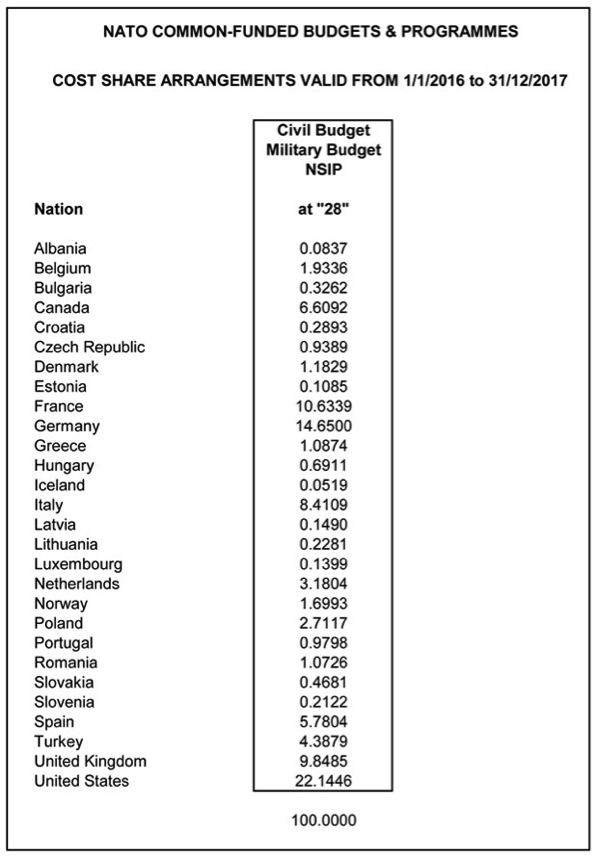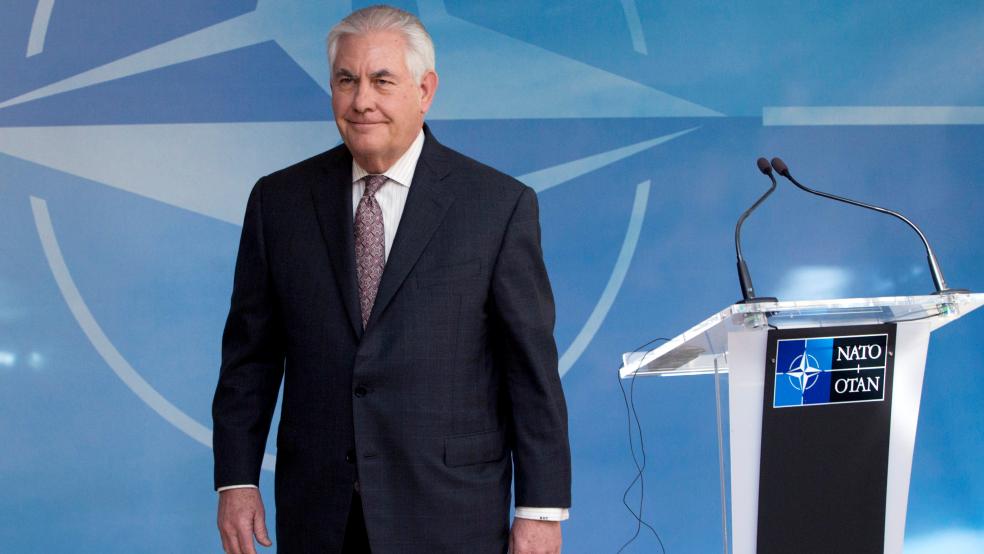Donald Trump keeps criticizing the North Atlantic Treaty Organization (NATO) as “obsolete.”
“Our big threat today is terrorism. Okay? And NATO’s not really set up for terrorism. NATO is set up for the Soviet Union more than anything else. And now you don’t have the Soviet Union,” Trump said in an interview with The Washington Post.
President Obama on Monday defended the organization after a meeting with NATO’s Secretary General. “NATO continues to be the linchpin, the cornerstone of our collective defense and U.S. security policy," the president said. The Pentagon and Trump’s election rivals Ted Cruz and Hillary Clinton have also defended the alliance and blasted Trump for his remarks.
Related: Bernie Sanders Wants a New NATO, Including Russia, to Fight ISIS
Here’s everything you need to know about NATO and the discussion Trump has sparked:
What is NATO?
The organization is the largest peacetime military alliance in the world. Established on April 4, 1949, NATO is an intergovernmental military alliance in which its 28 member states have agreed to defend each other in case of an attack by any external party. Article 5 of the NATO agreement says that an armed attack against one or more of the allies “shall be considered an attack against them all” and following such an attack, each ally would respond with “such action as it deems necessary, including the use of armed force, to restore and maintain the security of the North Atlantic area.”
Why was NATO formed in the first place?
It was created after World War II in response to the growing threat of the Soviet Union. Several countries in Western Europe were fearful for their safety in the midst of increasing tensions with the Soviets. The alliance also served to promote European political integration.
Even though the Treaty of Brussels had been signed in 1948, the signing of a new treaty that included that U.S. was thought to be necessary to counter any possible revival of nationalist militarism. With the U.S. providing support to Western Europe, countries were less likely to deal with security concerns by negotiating with the Soviets.
What countries are in NATO?
The treaty originally included 12 nations, but has expanded over the years to 28. The current members are Albania, Belgium, Bulgaria, Canada, Croatia, Czech Republic, Denmark, Estonia, France, Germany, Greece, Hungary, Iceland, Italy, Latvia, Lithuania, Luxembourg, Netherlands, Norway, Poland, Portugal, Romania, Slovakia, Slovenia, Spain, Turkey, the United Kingdom and the United States.
A number of other countries and international organizations — the United Nations, the European Union and the Organization for Security and Cooperation in Europe — also cooperate with NATO in a range of capacities.
Can other countries join?
NATO employs an “open door policy,” in which any European country that meets specific political, economic and military criteria can join. Countries that want to join must also be able to carry out the commitments and obligations of membership, including military contributions to the alliance, a working democratic government based on a market economy, unbiased treatment toward minority populations, a dedication to peaceful resolutions of disputes and democratic institutional structures and civilian-military relations.
Do other countries want to join NATO?
Four countries have announced they would like to become members of NATO: Bosnia and Herzegovina, Georgia, Montenegro and the former Yugoslav Republic of Macedonia. Ukraine would like to be a member and has applied to join, but the process has stalled amid protests from Russia.
Related: NATO Countries Continue to Fail to Meet Defense Spending Promises
How is NATO run?
Each member nation has an ambassador or permanent representative on the North Atlantic Council who is supported by advisors and officials who sit on different NATO committees. The current NATO Secretary General, the Alliance’s top international civil servant and chief spokesperson, is Jens Stoltenberg, the former prime minister of Norway. A Secretary General serves for four years, but a fifth year is possible if all member states agree.
Have member states ever come to the military defense of another member state?
The first and only time Article 5 of the NATO treaty was invoked was on Sept. 12, 2001, the day after the 9/11 attacks. In response to the attacks, the Organization deployed the International Security Assistance Force (ISAF) to Afghanistan. Their main missions were to train the Afghan National Security Forces and help the country rebuild its government institutions.
How do individual countries participate?
All member countries voluntarily send troops and/or equipment for NATO’s military force as well as contributing money to NATO’s fund civil and military budgets. The civil budget is for personnel expenses and operating costs for NATO’s headquarters in Brussels, Belgium. For 2016, the civil budget is just over $253 million. The military budget, which provides the funding for the entirety of the NATO Command Structure, is a little more than $1.3 billion.
Does the U.S. actually pay for the “lion’s share” of NATO like Trump claims?
How much each country contributes to the alliance’s direct budget is based on a cost-sharing formula tied to its Gross National Income. Under that formula, the U.S. provides about 22 percent of NATO’s budget, The U.S. pays for 22 percent of the alliance’s budget, compared to 15 percent for Germany, 11 percent for France, 10 percent for the United Kingdom, 8 percent for Italy and so forth.

The real point of contention is the indirect funding of NATO. The organization asks all of its member states to put at least 2 percent of their GDP toward their own defense spending. But only five countries — Poland, the U.S., Great Britain, Greece and Estonia — actually meet or exceed that goal. The median spending of each country on defense is just 1.18 percent of GDP, compared to 3.7 percent for the U.S.
As NATO itself explains on its website: “Today, the volume of the US defense expenditure effectively represents 73 per cent of the defense spending of the Alliance as a whole. This does not mean that the United States covers 73 per cent of the costs involved in the operational running of NATO as an organization, including its headquarters in Brussels and its subordinate military commands, but it does mean that there is an over-reliance by the Alliance as a whole on the United States for the provision of essential capabilities, including for instance, in regard to intelligence, surveillance and reconnaissance; air-to-air refuelling; ballistic missile defense; and airborne electronic warfare.”
This is not a new issue, either, as the NATO website makes clear: “The combined wealth of the non-US Allies, measured in GDP, exceeds that of the United States. However, non-US Allies together spend less than half of what the United States spends on defense. This imbalance has been a constant, with variations, throughout the history of the Alliance and more so since the tragic events of 11 September 2001, after which the United States significantly increased its defense spending.”





